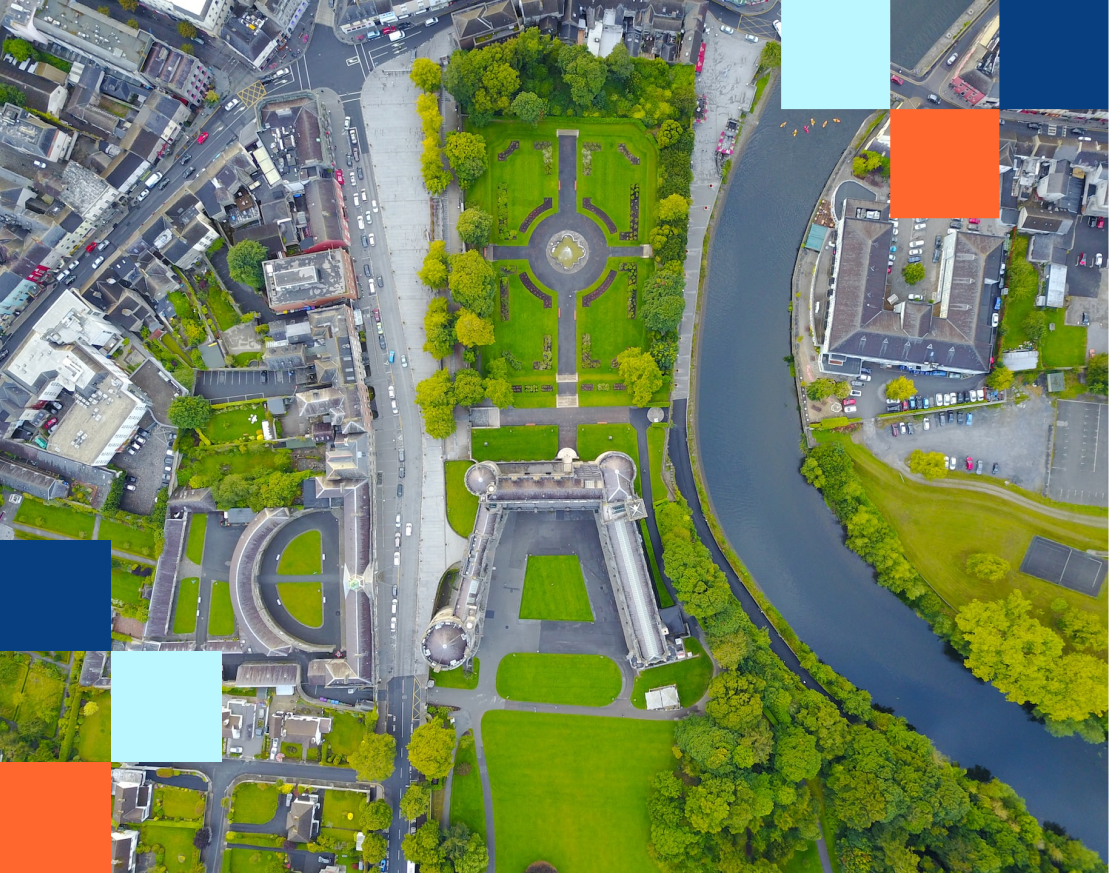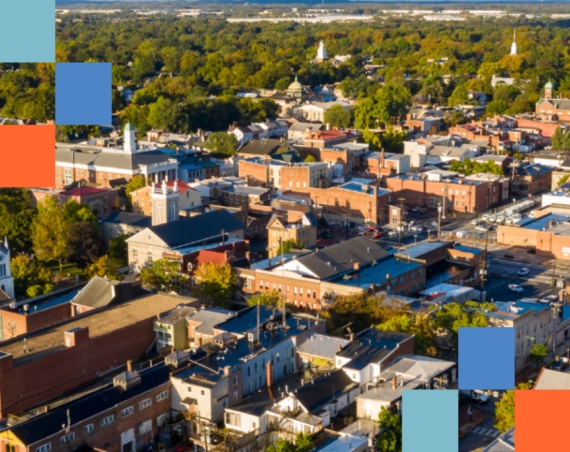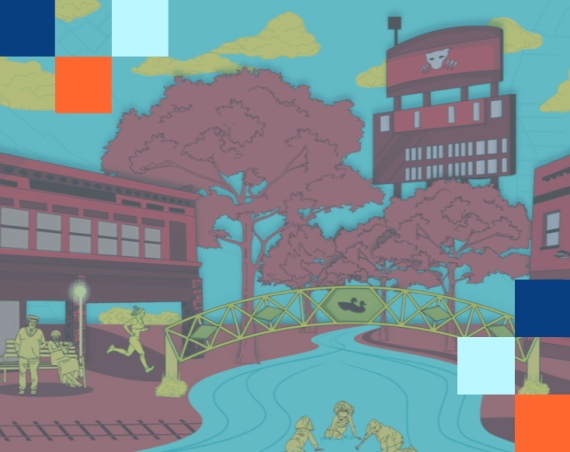Planning involves making decisions about the future of our cities, towns, and countryside. So it goes without saying that involving as many people in your community as possible is crucial. As a council, this means making community engagement in local planning a success. In this article, we list best practices and share examples of effective local planning consultations to get you inspired.
All local authorities must have an up-to-date Local Plan in place by 2023, replacing and consolidating previous Development Plan Documents (DPDs) such as Core Strategies, Development Management Policies, and Area Action Plans. Moreover, Local Plan Policies need to be reviewed at least every five years, and where necessary updated.
Why is online community engagement in local planning important?
Local plans set out a vision and framework for the future development of the area over the course of 15 years, addressing a community’s numerous needs and opportunities. A few challenges are at stake: ensuring (enough) affordable housing, supporting a thriving local economy, and mitigating and adapting to climate change.
While Local Planning involves statutory engagement processes, you should approach it as a longer-term process surpassing a particular moment in time to effectively build relationships with your community members, and trust around your work.
By involving your residents and knowing their priorities, you can better divide resources and accurately see what supporting infrastructure will be needed. This will result in more support for future development projects, and a more positive rating of your council’s decisions in general.
Best practices to get your community engaged in local planning consultations
The first stage of any Local Plan consultation, whether it’s about an update to an existing Plan or the start of a new one, is gathering input from the community to identify key priorities. We’re sure you’ll agree that you need to engage a maximum number of community members through the process. Helping residents meaningfully navigate issues and options can prove difficult, though. To receive valuable feedback, you’ll have to make people care and make it easy for them to participate. Fortunately, there are a few ways to do so:
- Provide context. Why is this plan being devised? Why does it matter, and what will it change? Helping community members understand the importance of the decisions at hand will pique their interest in getting involved.
- Go visual. Experiment with infographics, interactive maps, mind maps, or other visual elements when sharing information. Ensuring information is easy to process and retain is crucial in kindling engagement.
- Break your plan down into smaller, more specific pieces. If one of the sections of your plan focuses on creating greener spaces, this part can further be broken down according to specific neighbourhoods, existing green spaces, or relevant local topics. This allows community members to focus their engagement efforts on the topics or areas that matter to them most.
- Choose your engagement methods wisely. Some residents might be so eager to weigh in that they won’t be satisfied with filling in a quick survey. Others might want to participate but don’t have the time to join a workshop and deliberate with other community members. Enabling everyone to have their voices heard through different methods can help convince a broader group to get involved.
- Take a hybrid approach. Online participation can be quick, accessible, and remote, while offline participation fosters real-life connections and collaboration. Combining both online and offline will help you reach a wider audience and high-quality input.
- Think about diversity and inclusion. Engagement should reflect the diverse population of your area. Give thought about how you can make engagement accessible and include as many communities as possible.
Examples of effective community engagement in local planning consultations
To help inspire your local planning consultations, we’ve gathered three effective examples, and we’ll show you how exactly they got their community to engage.
Havant Borough Council is building a better future
Havant Borough Council’s local plan is a good example of holistic information sharing, and providing your community with multiple engagement venues. Their ‘Building a Better Future’ plan will outline where development will take place at least over a 15-year period and the infrastructure required to support development.
As we mentioned earlier, Local Plans cover a wide range of topics, and this complexity necessitates involving residents in a meaningful way. Ensuring participants have all the information they need to share their views is one of the most important challenges.
As part of their Phase 1 consultation which looks at statutory engagement with stakeholders, such as the call for sites with landowners and developers, the council made great use of the available customisable features to make the consultation document information easily accessible, guide users through the process, and drive engagement.
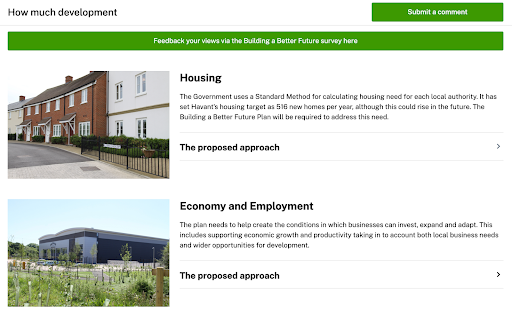
After reading relevant background information, community members could participate in a survey asking them about the proposed approaches, and if they were in line with the communities’ needs. Besides sharing their views in the survey, residents could also submit further comments on the different topics on the platform.
This allows for more transparency in view of what residents think, and opens the space for dialogue between residents, community groups, and local authorities.
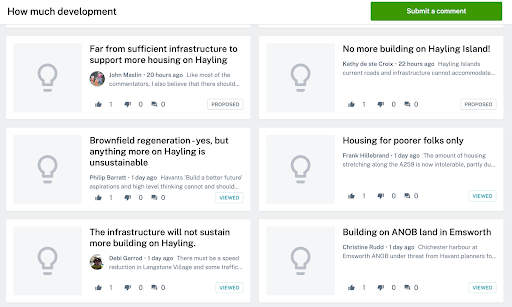
In addition to online information and consultation, the council also organised face-to-face exhibition events where planning policy officers were present to talk to community members about the Plan. Having tablets at hand allowed visiting residents to complete the survey during the event, take a hard copy of the survey away or save links to the survey via QR codes on business cards.
Check out their engagement platform here
Newham is refreshing its Local Plan
At the end of 2021, Newham involved its residents in the review of their Local Plan. The main focus of the refresh was to ensure the council’s plans respond to key challenges such as delivering inclusive growth, supporting the Covid-19 recovery, and addressing climate emergency.
The Local Plan review is taking place over a three-year period, with three rounds of consultation and engagement. Between 18 October – 17 December 2021, the council engaged their community on several statutory documents needed to plan the actual consultation on the draft Local Plan, namely the Issues and Options document, Integrated Impact Assessment Scoping Report, Call for Sites, and draft Statement of Community Involvement.
For each of these, the Council created a dedicated project page that laid out all details and invited the public to weigh in on a survey. For the Issues & Options document, the Council even encouraged residents to share ideas and comments publicly.
The next stage of the Local Plan Refresh will be consultation on the Draft Local Plan. To make it easier for residents to stay informed when they can participate in the next phase, Newham’s council encourages participants to sign up for their newsletter. This is a good tactic to ensure that residents engage continuously.
Check out their engagement platform here
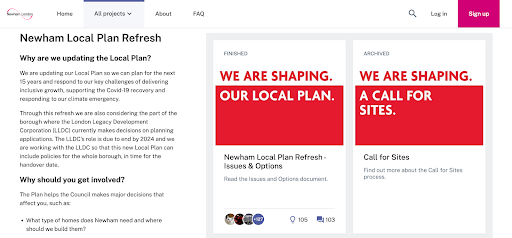
Wokingham focuses on right homes in the right places in Local Plan update
In Wokingham, work is underway on a new local plan which will shape the future of the community.
The new Local Plan will guide where and how growth will take place in the borough in the coming years, up to 2038. The council needs to plan for more affordable housing, new employment, schools, roads, parks, shops, and community facilities to create places people want to live, work, and do business.
Wokingham’s community was invited to respond to a revised plan reflecting preferences expressed in earlier consultations by answering a survey. Wokingham Borough Council held six public information events, virtually and in person, to get a real conversation with their residents. This is a great example of how you, as a local government, can tackle controversial and difficult conversations directly with your community, rather than shying away from engaging them. Rather than fearing community input on these longstanding issues, the Council gathered innovative ideas from community members to enact real change.
This consultation started on somewhat of a bad note, as the council received some negative feedback when it first launched. There had been a lot of development in the borough in recent years, and community members didn’t see the benefit. So it didn’t come as a surprise that the announcement of new development caused unrest. The council turned the tide using the platform to give more information on and visualize, with videos and images, the new roads, open green spaces, schools, leisure centres that came out of the previous local plan. This even made residents reach out to the council and apologise for earlier negative feedback.
The Wokingham Borough Council is now reviewing feedback before taking it to the next stage.
Check out their engagement platform here
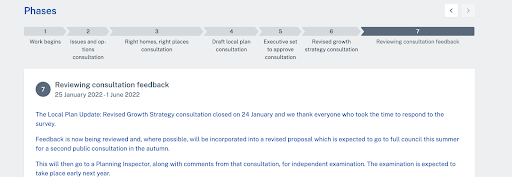
Read more:
